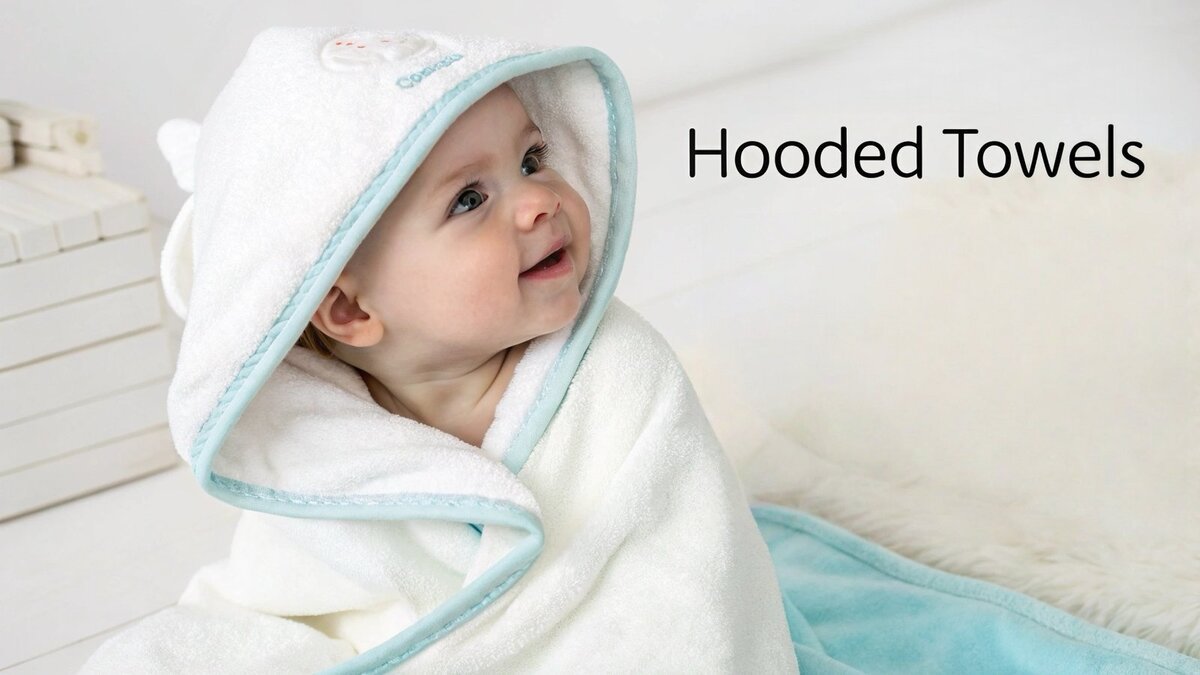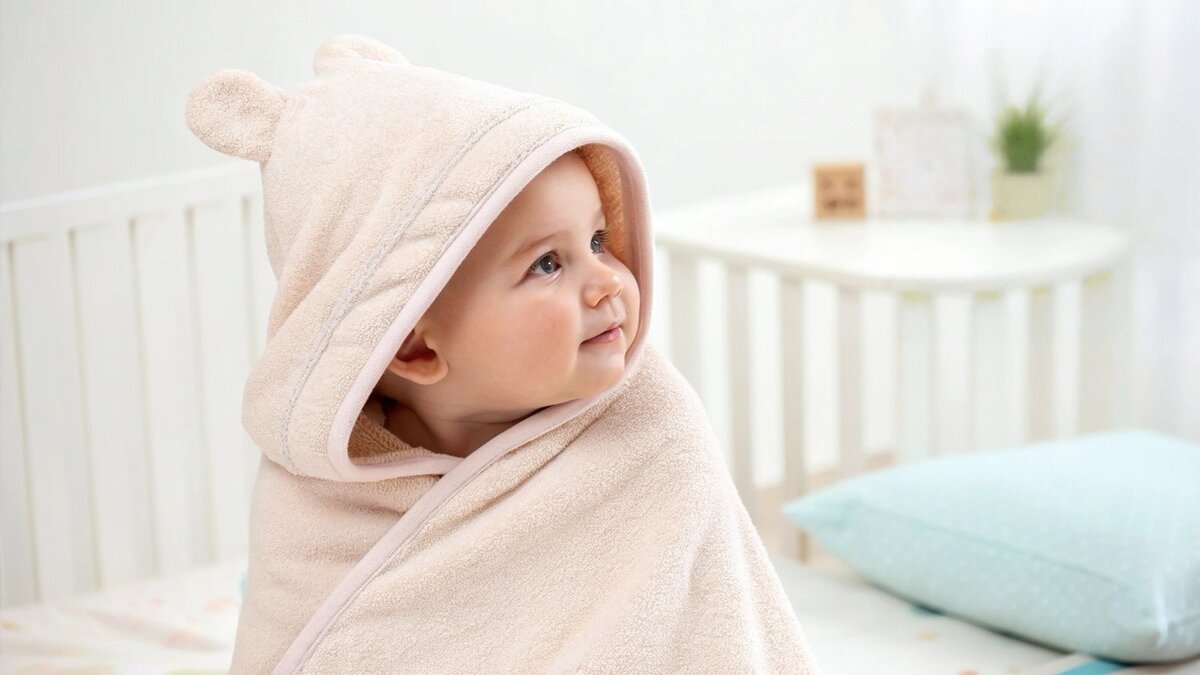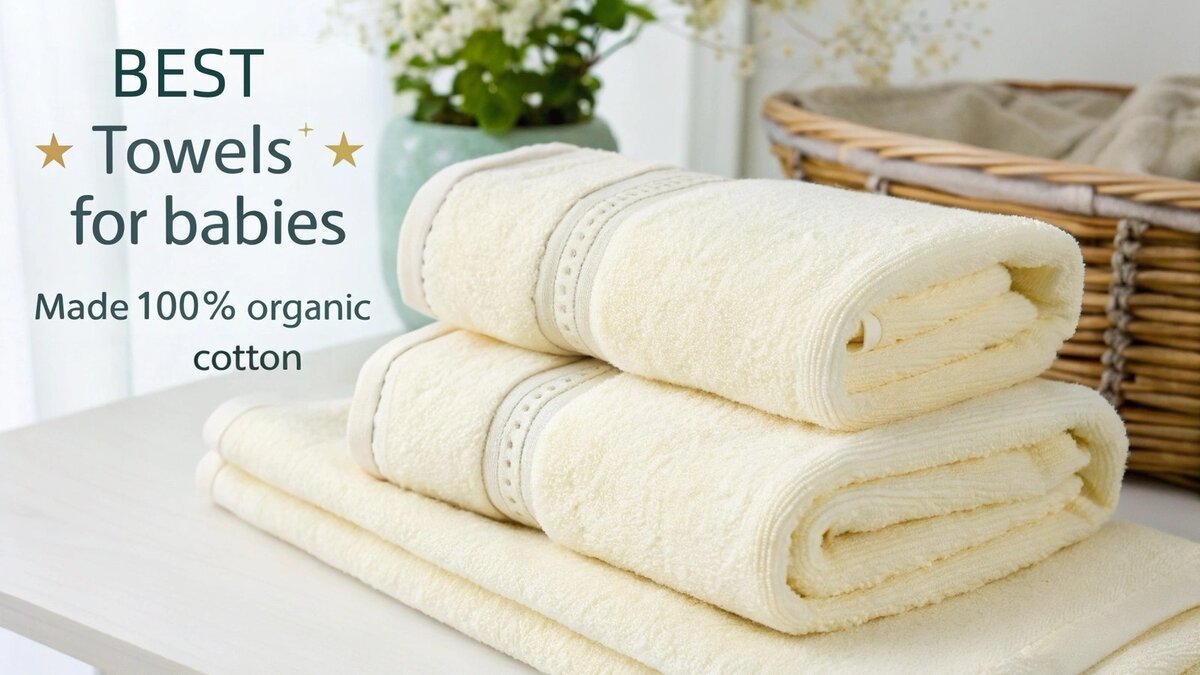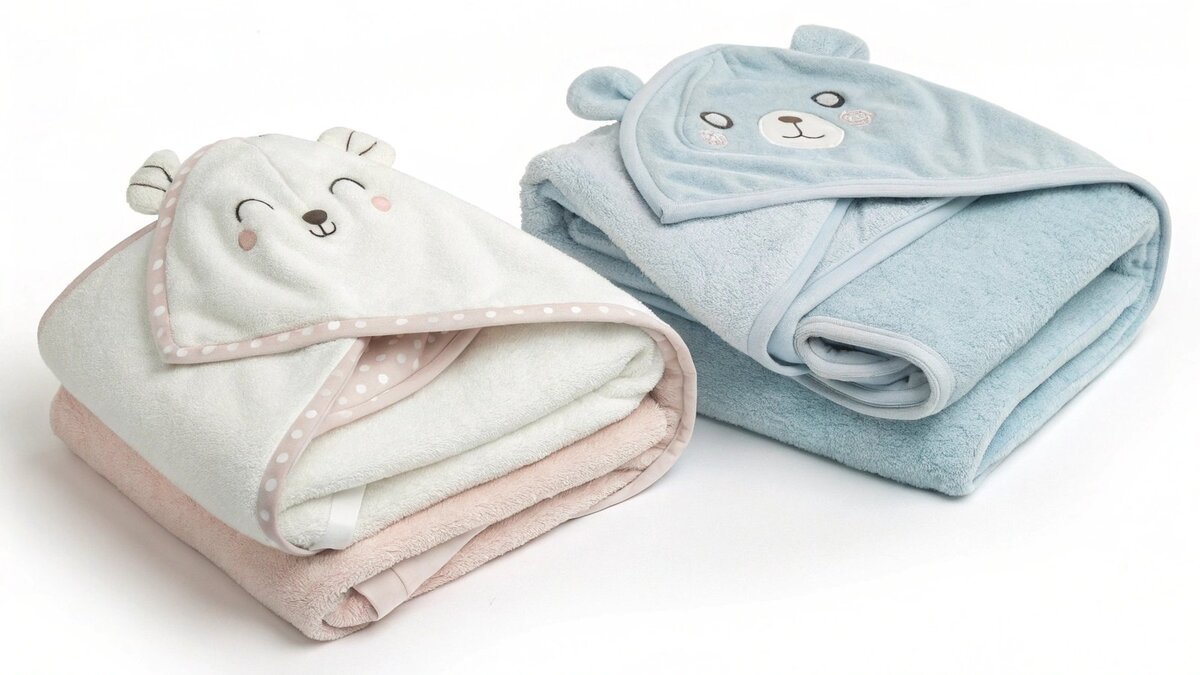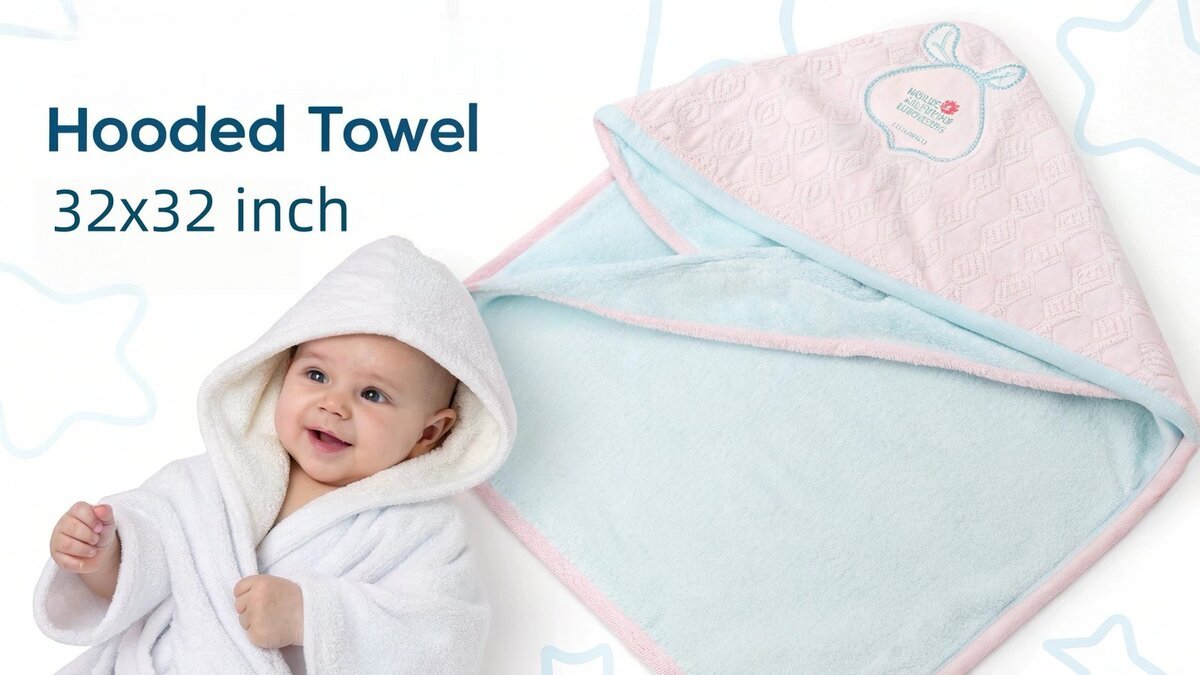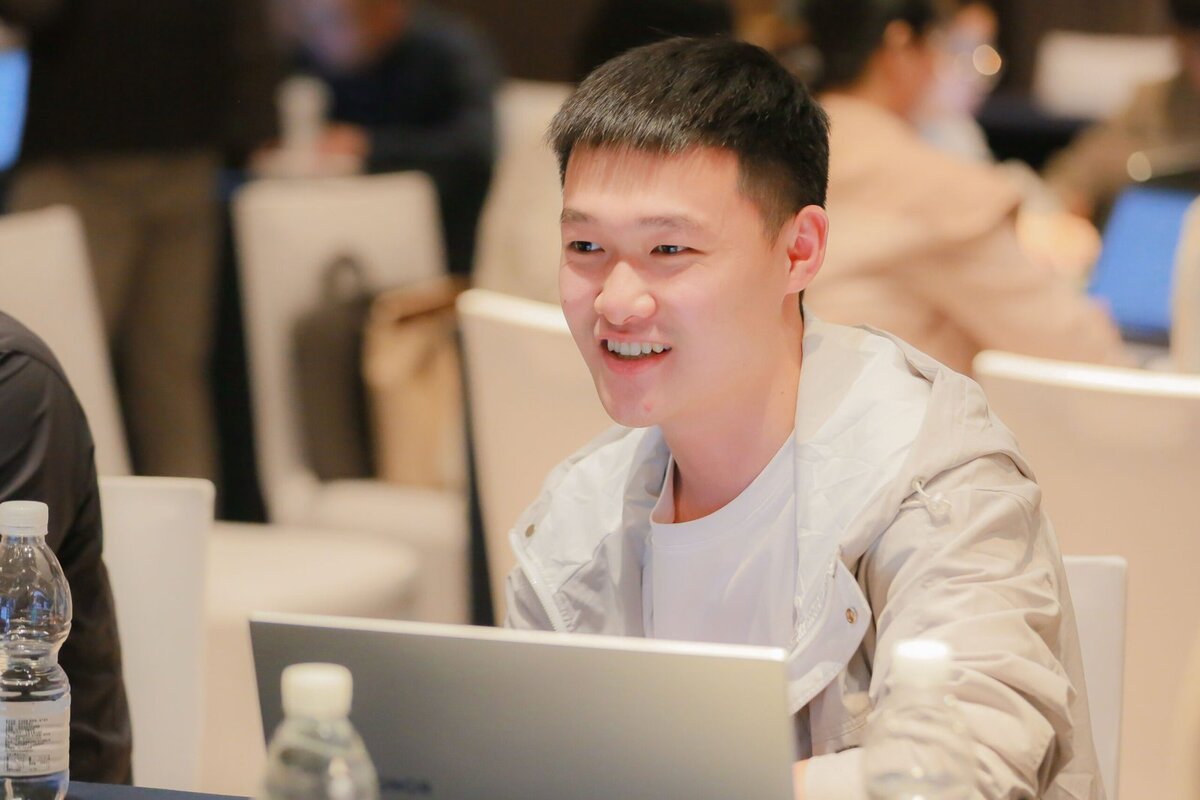Keeping a baby warm and calm after a bath can be a challenge. You need a simple solution that works quickly before they get fussy from the cold.
The best hooded towels for babies are safe, soft, and sized to last. They should be made from absorbent, natural materials like OEKO-TEX certified organic cotton. A generous size of around 32×32 inches ensures the towel can be used from the newborn stage through toddlerhood.
Choosing the right towel for a baby seems simple on the surface, but there’s a lot to consider. As someone who has guided countless brands through textile choices, I know that the details matter. You need to think about safety, what materials touch a baby’s sensitive skin, how many a parent really needs, and what size offers the best value. Getting these elements right is key to creating a product that parents trust and recommend. Let’s dive into the specifics of what makes a great hooded towel.
Are hooded towels safe for babies?
Safety is the top concern when choosing any baby product. The wrong material or design could cause irritation or worse, leaving you with a product that customers can’t trust.
Yes, hooded towels are designed with a baby’s safety as the first priority. The hood keeps the baby’s head warm to prevent post-bath chills. For ultimate safety, choose towels with OEKO-TEX certification, which guarantees they are free from harmful chemicals and safe for delicate skin.
When I work with brands launching a baby line, safety is our first and most important conversation. It’s not just about feeling soft; it’s about being technically safe. A baby’s skin is far more permeable than an adult’s, so we have to be extremely careful about what we use.
The Purpose of the Hood
A baby loses a significant amount of body heat through their head, especially right after a warm bath. The primary safety feature of a hooded towel is its ability to cover the head immediately, trapping warmth and preventing the baby from getting chilled. This simple design feature is crucial for maintaining a stable body temperature in newborns and infants.
Material Safety and Certifications
This is where I tell my clients not to cut corners. A certification like OEKO-TEX STANDARD 100 is non-negotiable for baby products. It means every thread, button, and dye has been tested and found free of a long list of harmful substances. This is your proof that the towel is genuinely safe for a baby’s skin.
Key Safety Checks for Production
| Feature | Why It Matters | My Recommendation |
|---|---|---|
| Fabric Certification | Ensures no harmful chemicals are present. | Insist on OEKO-TEX STANDARD 100 or GOTS. |
| No Loose Embellishments | Prevents choking hazards like buttons or pom-poms. | Opt for embroidered logos or simple, secure stitching. |
| Secure Seams | Prevents fraying and loose threads that can wrap. | Demand high-quality stitching and finishing on all edges. |
| Hypoallergenic Dyes | Reduces the risk of skin irritation or allergies. | Use certified, low-impact dyes for all colors. |
What kind of towel is best for babies?
The towel aisle is overwhelming with choices. Picking the wrong fabric can lead to a towel that doesn’t absorb well, feels rough after one wash, and irritates a baby’s skin.
The best towels for babies are made from highly absorbent and soft natural fibers. 100% organic cotton is the top choice because it’s extra soft, durable, and grown without harsh chemicals, making it ideal for sensitive skin. It provides the perfect balance of function and comfort.
Over the years, I’ve handled thousands of fabric samples, and for baby products, my recommendation is almost always the same: stick to pure, natural, and certified materials. You want a towel that performs well and gives parents peace of mind. The fabric is the foundation of a high-quality product.
Cotton vs. Other Materials
Cotton is the industry standard for a reason. It’s a natural workhorse—absorbent, strong, and easy to wash. While you might see bamboo towels marketed as being incredibly soft, many are actually a form of rayon that uses a chemical process to break down the bamboo pulp. For purity and proven performance, I find 100% cotton is the most reliable choice.
The Organic Cotton Advantage
When you choose organic cotton, you’re getting a superior product. It’s grown without synthetic pesticides or fertilizers, which is better for the environment and for the baby’s skin. It often feels softer because the fibers aren’t damaged by harsh chemicals during processing. For brands targeting discerning parents, a GOTS (Global Organic Textile Standard) certification is a powerful selling point.
Weave and Weight (GSM)
GSM, or Grams per Square Meter, tells you the density of the towel. For a baby towel, you don’t want something too heavy that takes forever to dry, but you also don’t want it to be thin and flimsy. I’ve found the sweet spot is between 400 and 600 GSM. This range offers a plush, luxurious feel that absorbs water quickly without being overly bulky. It’s a small detail that makes a big difference in quality.
How many hooded towels do I need for a baby?
New parents are always trying to figure out how much gear they need. If you buy too few towels, you’re constantly doing laundry. If you buy too many, it’s a waste of money.
Having two to four hooded towels is the ideal number for a baby. This ensures you always have a clean, dry towel ready—one for use, one in the laundry, and an extra one or two for unexpected messes or to use between laundry days.
From a product development standpoint, understanding the customer’s usage pattern is key. It helps in deciding whether to sell single towels or create multi-packs. My experience shows that a small set offers the most practical solution for most families, making it a great option for gifting and starter packs.
The Basic "Two-Towel" System
The simplest logic is the "one in use, one in the wash" system. A family uses one towel for bath time, and it goes straight into the laundry hamper. The second clean towel is ready for the next bath. This system works perfectly if you do laundry every day or two. It’s efficient and ensures a fresh towel is always available without creating a huge pile of laundry.
Adjusting for Laundry Habits
Let’s be realistic—most new parents aren’t doing laundry every single day. If a family washes clothes every three or four days, they’ll need more than two towels to get by. Having three or four towels in rotation provides a comfortable buffer. This prevents that moment of panic when you realize the only towel you have is still damp or dirty.
Why Spares are Essential
Babies are unpredictable. A towel might get messy from spit-up or a diaper leak long before bath time. I once had a client who started selling three-packs instead of two-packs after getting feedback from parents. They found that having that one extra "just in case" towel reduced stress significantly. This is a great selling point: it’s not just a towel, it’s convenience and peace of mind.
| Bathing Frequency | Laundry Frequency | Recommended Number |
|---|---|---|
| Daily | Daily | 2 Towels |
| Every Other Day | Twice a week | 3 Towels |
| A Few Times a Week | Once a week | 4 Towels |
What size hooded towel for baby?
Babies grow incredibly fast, and it’s frustrating to buy a product they’ll outgrow in a few months. A towel that’s too small won’t provide enough coverage to keep them warm.
The best size for a baby hooded towel is a generous square, around 32 x 32 inches (80 x 80 cm). This size is large enough to swaddle a newborn completely and remains functional as they grow into a toddler, offering years of use and excellent value.
When I consult with brands on product specs, I always push for longevity. A product that grows with the child is a smarter investment for the parent and builds more brand loyalty. A slightly larger towel doesn’t cost much more to produce but dramatically increases its useful lifespan and customer satisfaction.
Full Coverage for Newborns
For a newborn, the goal is to swaddle them completely after a bath. A 32 x 32-inch square is perfect for this. You can lay the baby in the center, pull the hood over their head, and then wrap the corners around them like a cozy burrito. This full coverage is essential for keeping them warm and secure from head to toe, which is exactly what a new parent wants. Smaller sizes just don’t provide this level of comfort and security.
Growing with the Child to Toddlerhood
Here’s the best part about a generously sized towel: it’s not just for babies. As the child gets older and can stand on their own, the towel transforms. It becomes a fun cape they can wear. The hood still fits, and the 32-inch length is long enough to dry their back and legs. A towel that can last from birth up to age 3 or 4 is a huge selling point. It tells the customer that you’ve thought about their long-term needs.
Common Market Sizes Compared
| Towel Size (Inches) | Best For | Lifespan |
|---|---|---|
| 28 x 28 | Newborns only | 0-6 months |
| 32 x 32 | Newborns to Toddlers | 0-3 years |
| 35 x 35 | Toddlers & Kids | 2-5 years |
As you can see, the 32 x 32-inch size hits the perfect sweet spot for the baby market.
Conclusion
Choosing the right hooded towel means focusing on safety, natural materials, a practical quantity, and a size that grows with the child. Get these details right for a perfect product.

